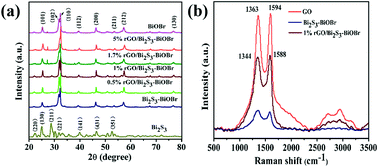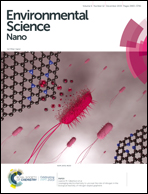Visible-light-driven Z-scheme rGO/Bi2S3–BiOBr heterojunctions with tunable exposed BiOBr (102) facets for efficient synchronous photocatalytic degradation of 2-nitrophenol and Cr(vi) reduction†
Abstract
Fabrication of Z-scheme heterojunctions and crystal facet engineering are effective strategies for enhancing visible-light photocatalytic redox ability. Visible-light-responsive Z-scheme reduced graphene oxide (rGO)/Bi2S3–BiOBr heterojunctions with a tunable exposed BiOBr (102) facet and high stability were prepared by a one-pot solvothermal strategy. A graphene oxide (GO) solution acts as a rGO precursor and crystal facet controlling agent of BiOBr (102). The optimized 1% rGO/Bi2S3–BiOBr catalyst shows a much higher photocatalytic activity in degrading a single-component 2-nitrophenol (2NP) solution and a reducing single-component Cr(VI) solution than Bi2S3, BiOBr and Bi2S3–BiOBr. In the mixture solution of 2NP and Cr(VI), 2NP degradation and Cr(VI) reduction occur simultaneously, and the Cr(VI) reduction efficiency and 2NP degradation efficiency reached 95% and 67%, respectively. The synergism of rGO/Bi2S3–BiOBr for simultaneous 2NP degradation and Cr(VI) reduction can be attributed to the efficient production of electrons and reactive oxygen species. This work sheds light on the design of facet-dependent Z-scheme photocatalysts to advance photocatalytic redox capability.



 Please wait while we load your content...
Please wait while we load your content...